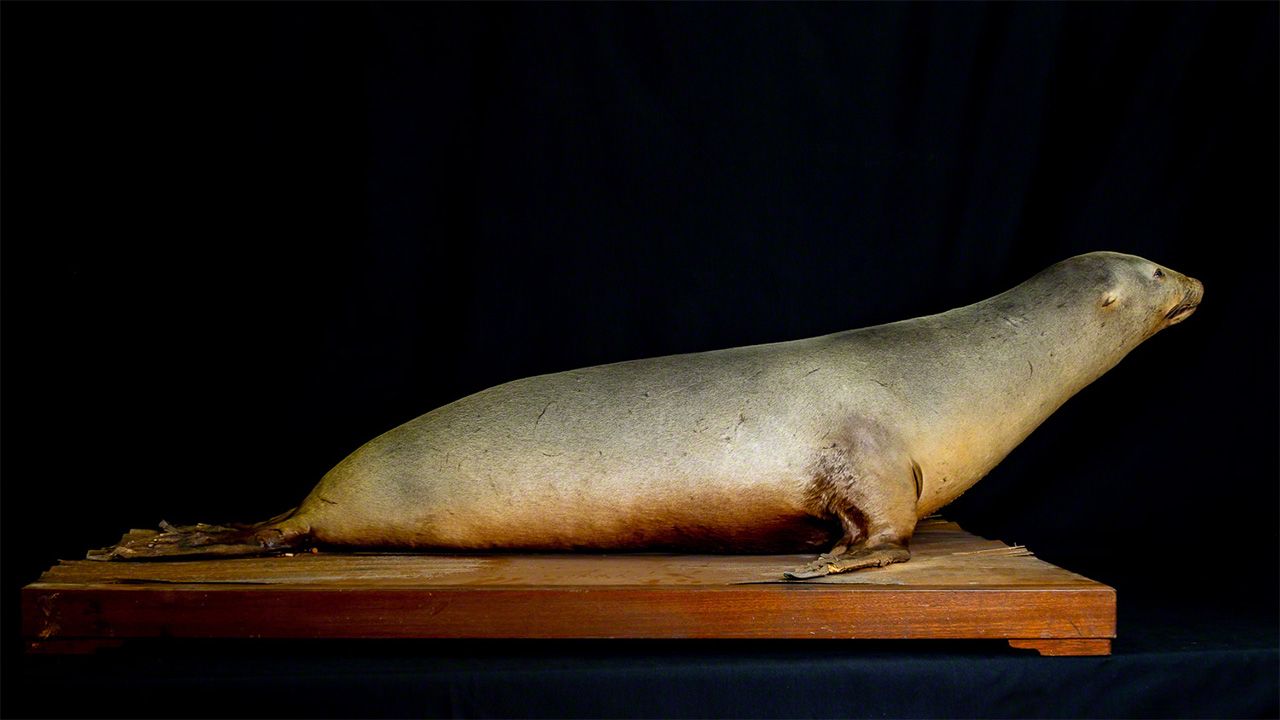
Piecing Together the Past: The Tale of a Japanese Sea Lion
Environment Culture History- English
- 日本語
- 简体字
- 繁體字
- Français
- Español
- العربية
- Русский
Charming Creatures
Before visiting a Tokyo aquarium several years back, I had never given much thought to sea lions. However, standing in front of a donut-shaped tank, watching the animals glide effortlessly through the water, I was surprised to find myself entranced. It felt odd to be gazing at these graceful swimmers surrounded by high-rise buildings far from their native ocean habitat, but at the same time it made me curious to know more about the seagoing creatures.
Sea lions belong to the same group of fin-footed, semiaquatic mammals as seals and are often mistaken for their less nimble kin. Unlike seals, though, sea lions—ashika in Japanese—are able to walk on all fours and can be taught to perform a variety of amusing tricks, such as clapping with their foreflippers, making these intelligent animals star attractions of aquatic shows at aquariums and theme parks.
Once abundant in the waters around Japan, today they are found mainly in remote northern coastal areas. One subspecies, the Nihon ashika or Japanese sea lion, inhabited a broad range stretching from the Kamchatka Peninsula and Kuril Islands to Japan and the Korean Peninsula. The animals were even known to exist on the Izu Islands and the Miura and Bōsō Peninsulas that border Tokyo Bay, surprisingly close to the bustling capital, well into the middle part of the Meiji era (1868–1912).
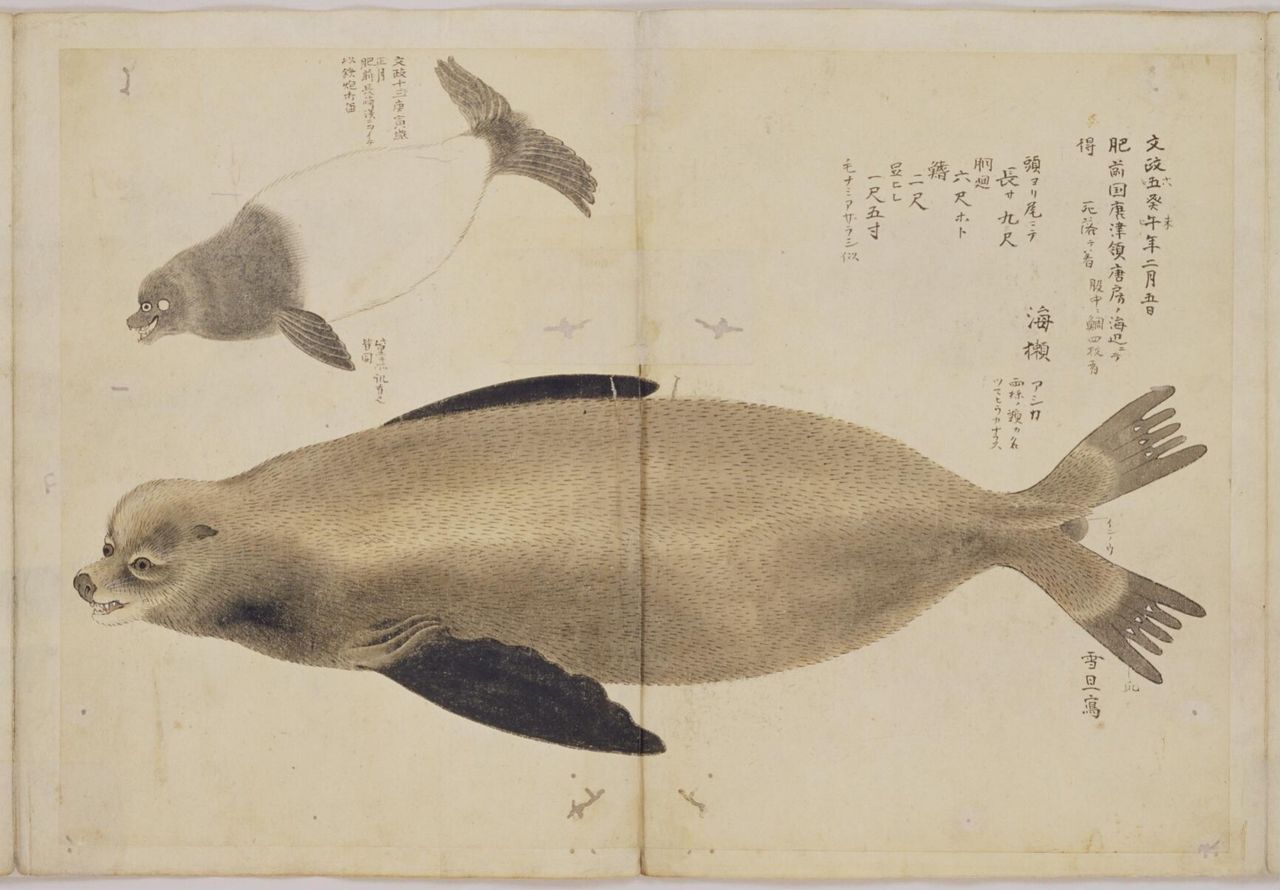
An 1822 drawing of a Japanese sea lion by Hasegawa Settan based on a specimen that washed ashore in what is now Karatsu, Saga Prefecture. (Courtesy of the National Archives of Japan)
However, the Meiji era was also when hunting of Japanese sea lions—prized for their hides, meat, and blubber—began in earnest. In addition, the animals suffered the degradation of their habitat, which, coupled with overhunting, caused populations to plummet. The Japanese sea lion has not been seen in the wild for a half-century and is now considered extinct.
I was overwhelmed by the thought that people could allow such an endearing native creature to vanish. What did it look like? How did it live? Seeking to answer these questions, I set out to uncover what traces of the Japanese sea lion I could find.
Scouring the internet for information, I happened across a newspaper article describing a preserved specimen uncovered among the archives of Kyūshū University. In life, it had been one of several Japanese sea lions kept at a Fukuoka aquarium that opened in the early part of the twentieth century. When it died, it was stuffed and remained for a time in the possession of the family of the then head of the aquarium. Its whereabouts were lost, though, and remained a mystery until the specimen was uncovered at the university.
Intrigued by the unusual tale and having no options for viewing a Japanese sea lion in the wild, I headed to Fukuoka to see the specimen for myself in the hopes of learning a little of the animal’s story.
Moving Campus
The preserved sea lion lay hidden for decades among the scientific archives of Kyūshū University and only saw the light of day when the school undertook the arduous task of moving from its aging facilities in the Hakozaki district on the east side of Hakata Bay to a new campus in Ito to the west. Started in 2005, the massive project took 13 years to complete.
In 2018, work was drawing to a close when word reached Hanada Noriko, the owner of a nearby café and music venue and great-granddaughter of the head of the aquarium, that a “strange, dust-covered” stuffed specimen had been uncovered. “It’s the sea lion,” Hanada exclaimed, recognizing immediately the mysterious creature as a long-forgotten family heirloom.
The story of the Japanese sea lion starts in 1910, the year Hanada’s great grandfather, Kubota Tomotoshi, left his job as a fisheries inspector to take over managing the newly opened Hakozaki Aquarium. Kubota had helped establish the facility and served as its second director until it closed in 1935.
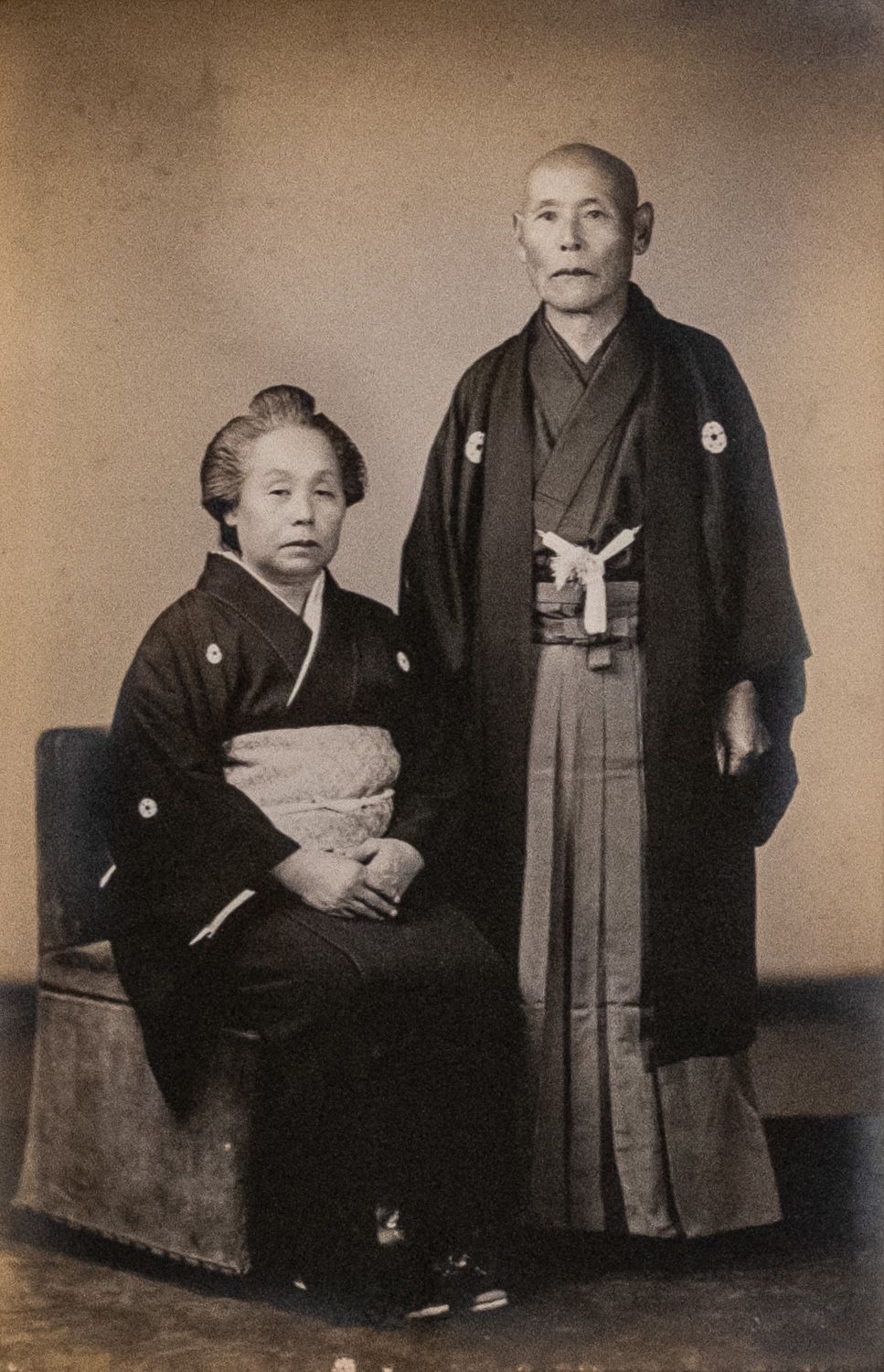
Kubota Tomotoshi, right, with his wife. As head of the Hakozaki Aquarium, he diligently worked to run the facility and educate the public. (Courtesy of Hanada Noriko)
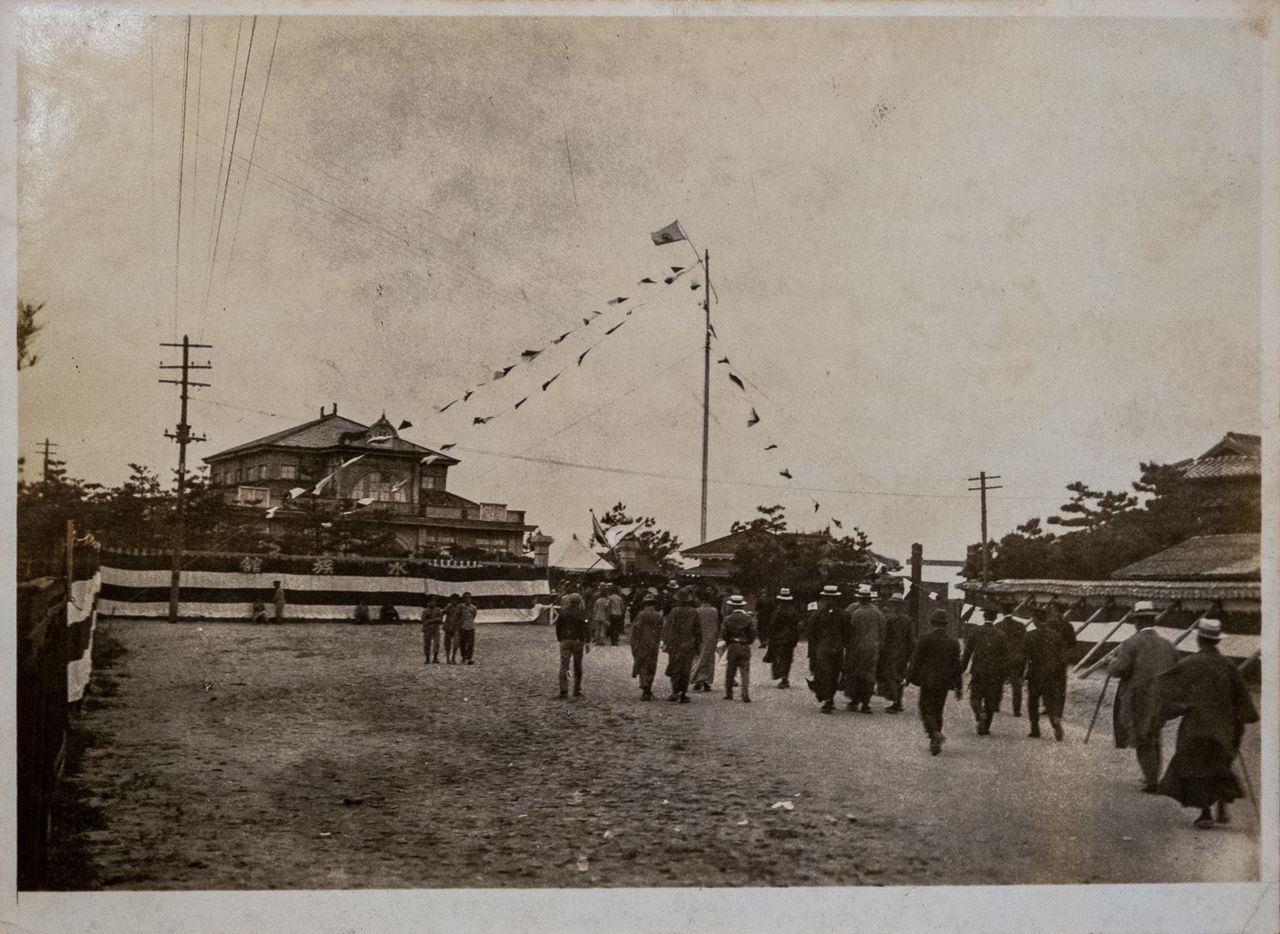
The Hakozaki Aquarium’s grand opening in March 1910. The facility was built with the financial backing of prominent locals as a “permanent amusement spot” for residents of the area. (Courtesy of Hanada Noriko)
Family Heirloom
Hanada opened her shop in 2009. Kyūshū University was already in the process of moving to its new Ito campus, but she chose Hakozaki out of a desire to share in the area’s legacy as leading seaside resort and center of higher education. In line with this, she named the shop Hakozaki Suizokukan Café in honor of the aquarium.
In truth, though, she knew only a little about the facility her great-grandfather once ran. She headed online to find more information, only to discover that much of what was known about the museum had already receded into the past. “I came across one website that questioned whether the aquarium had really existed at all,” she says. “It struck me that I might be the last person with any information about the place and that I’d better get busy documenting it for posterity.” Through the café, she met others who knew about the aquarium, and over the years she has gradually pieced together its story.
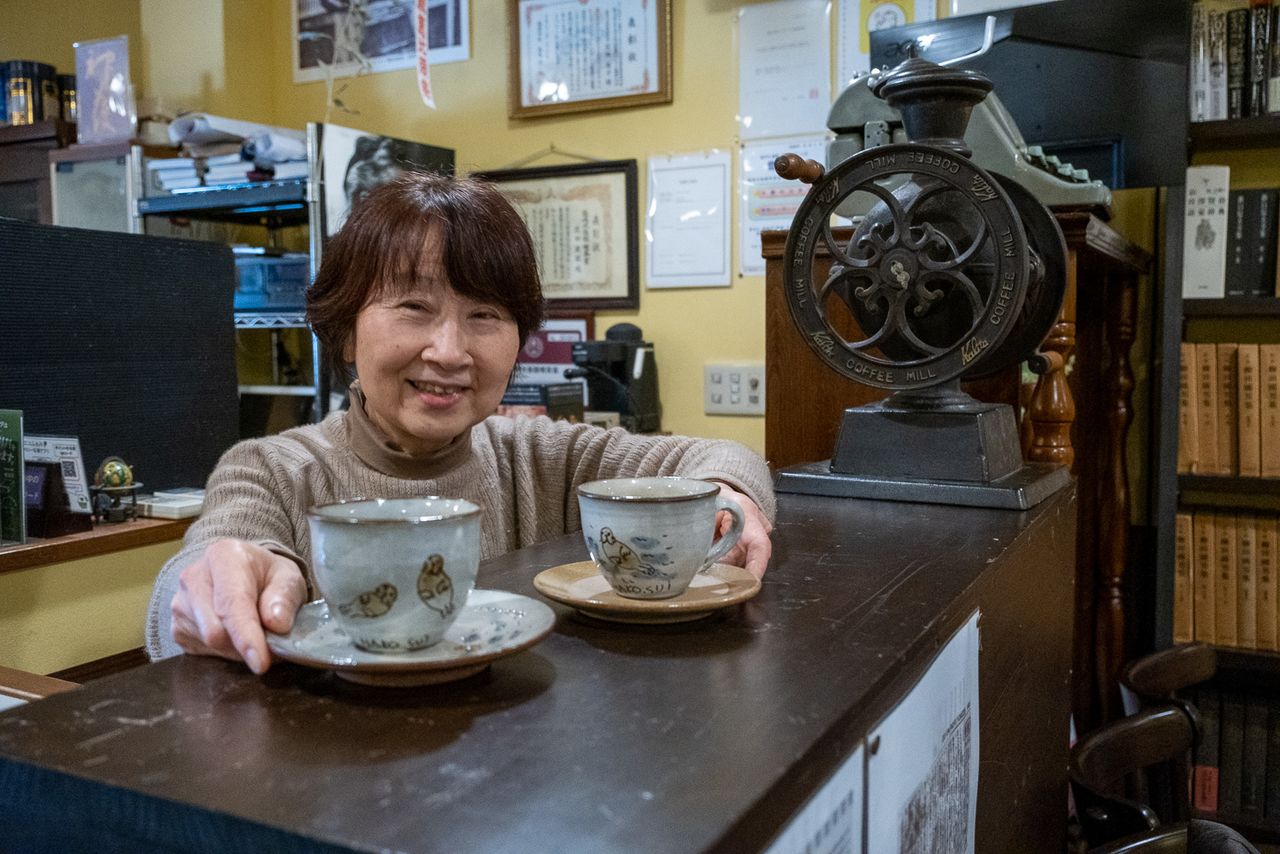
Hanada Noriko, owner of the Hakozaki Suizokukan Café. The shop’s specially designed cups feature Japanese sea lions. (© Hayashi Michiko)
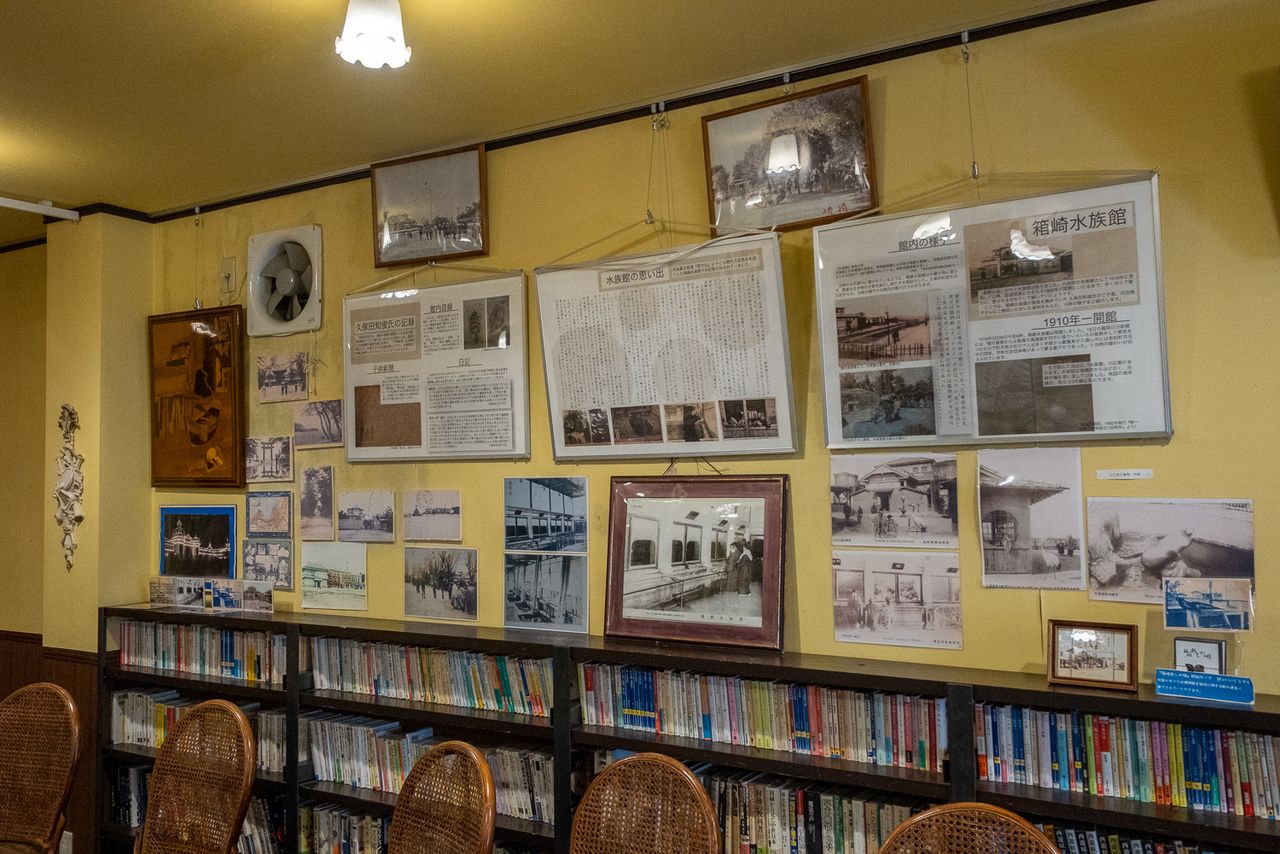
Displays about the aquarium hang along the walls of the café. (© Hayashi Michiko)
Hanada had heard from family members how two Japanese sea lions were among the aquarium’s featured attractions. When the animals died, they were mounted for display, with one being gifted to a local elementary school and the other donated to what was then Kyūshū Imperial University. Learning that the elementary school was slated to undergo repairs, she contacted the administration only to discover, much to her disappointment, that the specimen had long ago been discarded.
She placed her hopes on the survival of the second sea lion. “I was confident that the university wouldn’t toss something like that out,” she declares. Continuing her research into the aquarium, she kept her ears patiently attuned for word of the specimen’s whereabouts. When it finally arrived, she was ready.
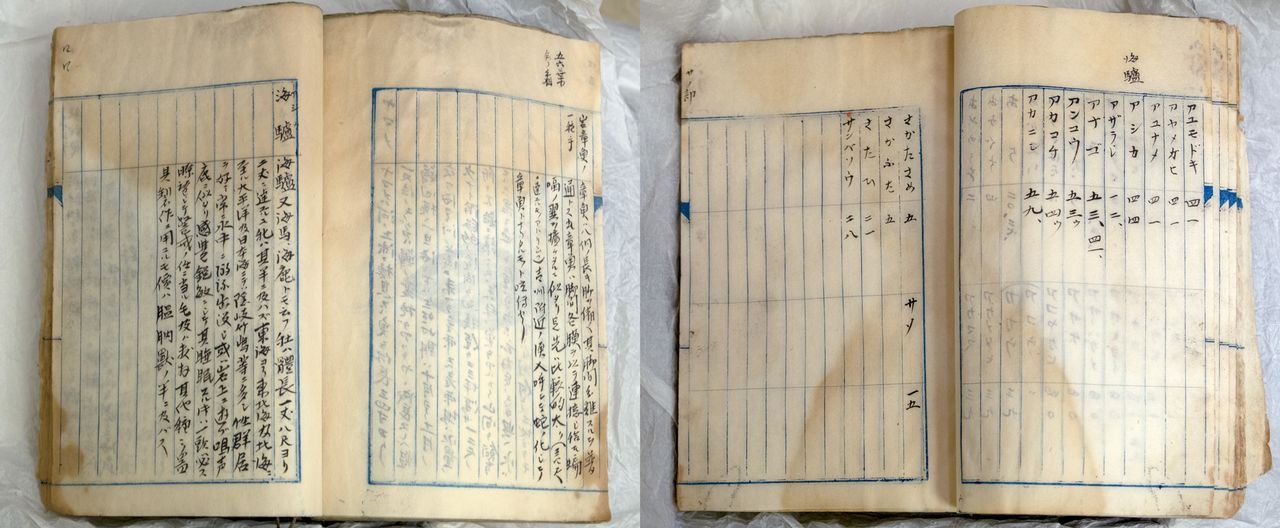
A ledger from the aquarium contained in a box of Hanada’s great-grandfather’s belongings with a section headed “Sea Lion.” (© Hayashi Michiko)
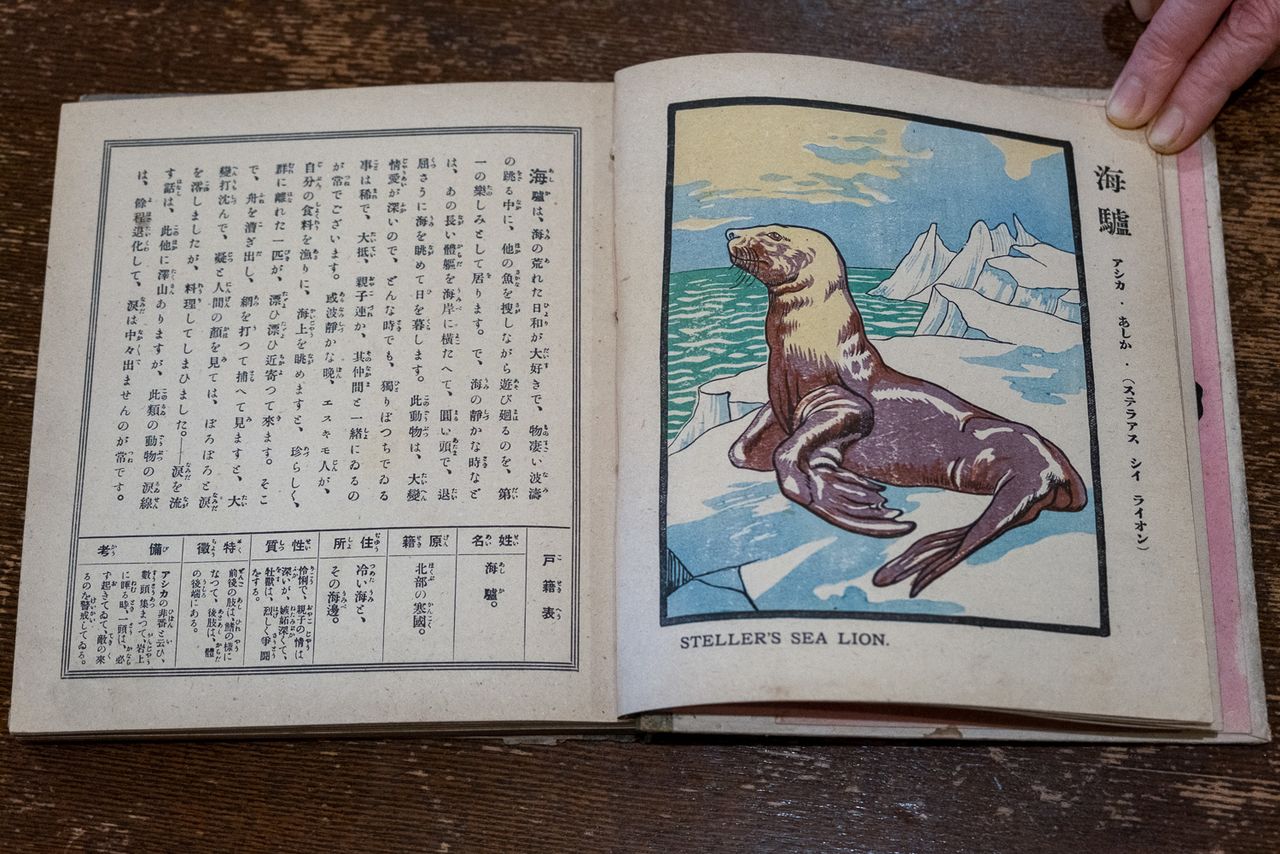
Also among her great-grandfather’s belongings was an illustrated encyclopedia of animals from 1915 authored by the Japanese biologist Ishikawa Chiyomatsu and others. (© Hayashi Michiko)
Heading to the university, Hanada found the stuffed sea lion covered in a coat of dust, but otherwise in good condition. She immediately volunteered to oversee its cleaning, recounting that “the fur was well preserved and had a pleasant feel. You could tell that the animal had been well cared for when it was alive.” She says that she had wondered about the animal since first learning of it and says that being part of its discovery has filled her with a warm sense of relief and accomplishment at doing her familial duty.
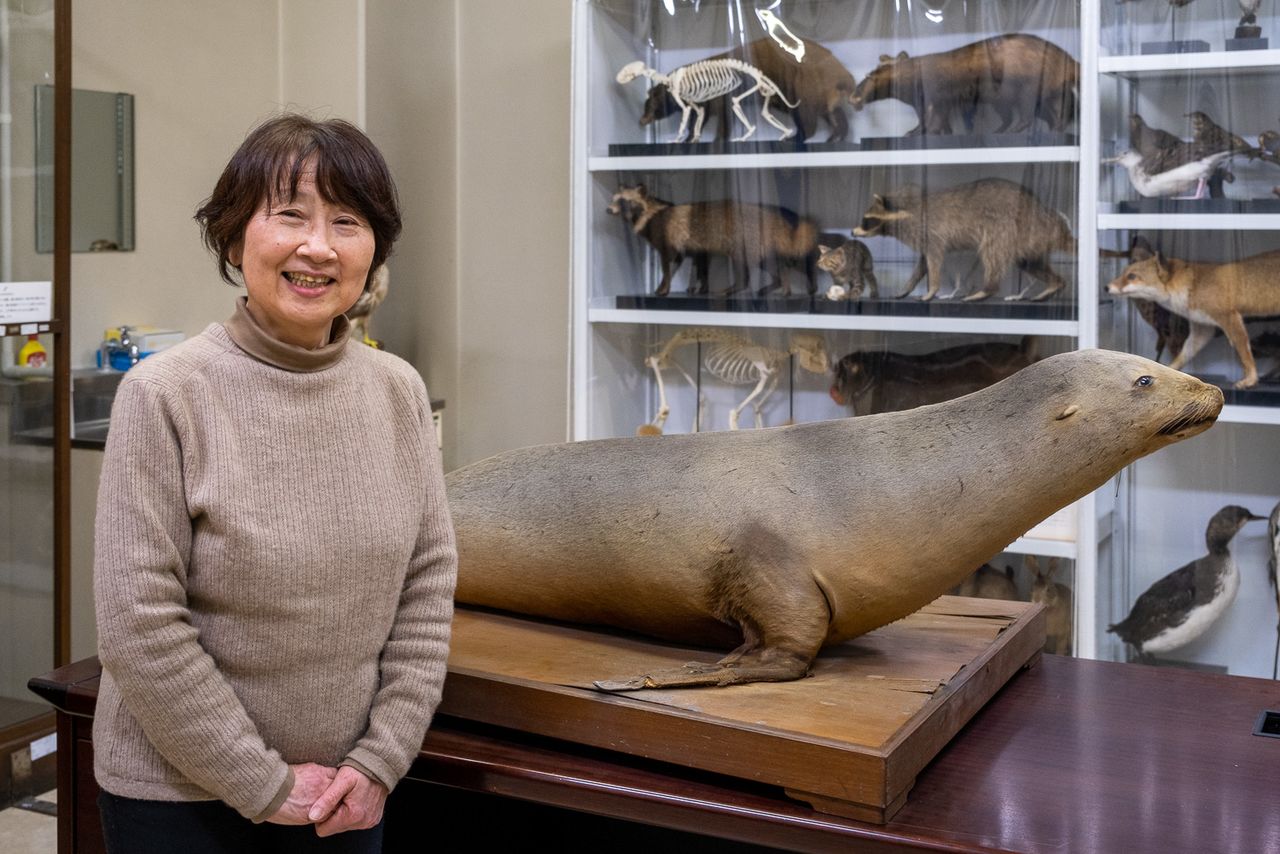
Hanada says she felt a strong affinity for the stuffed sea lion from the moment she laid eyes on it. (© Hayashi Michiko)
Despite Hanada’s certainty, questions remained as to whether the aquarium had actually kept sea lions. An article from a regional newspaper, the Fukuoka Nichinichi Shinbun, detailing the aquarium’s grand opening provided proof. The piece describes two sea lions, a 48-kilogram specimen from the Korean Peninsula and another weighing some 100 kilograms recently captured in Karafuto (now Sakhalin). The former was “used to people and able to do simple tricks,” while the latter was “still wild” and prone to biting the metal lid of its enclosure and barking at individuals who came near.
Hanada found further evidence in the form of commemorative postcards from the aquarium. Among the cards were several that had pictures of a sea lion that looked nearly identical to the stuffed specimen.
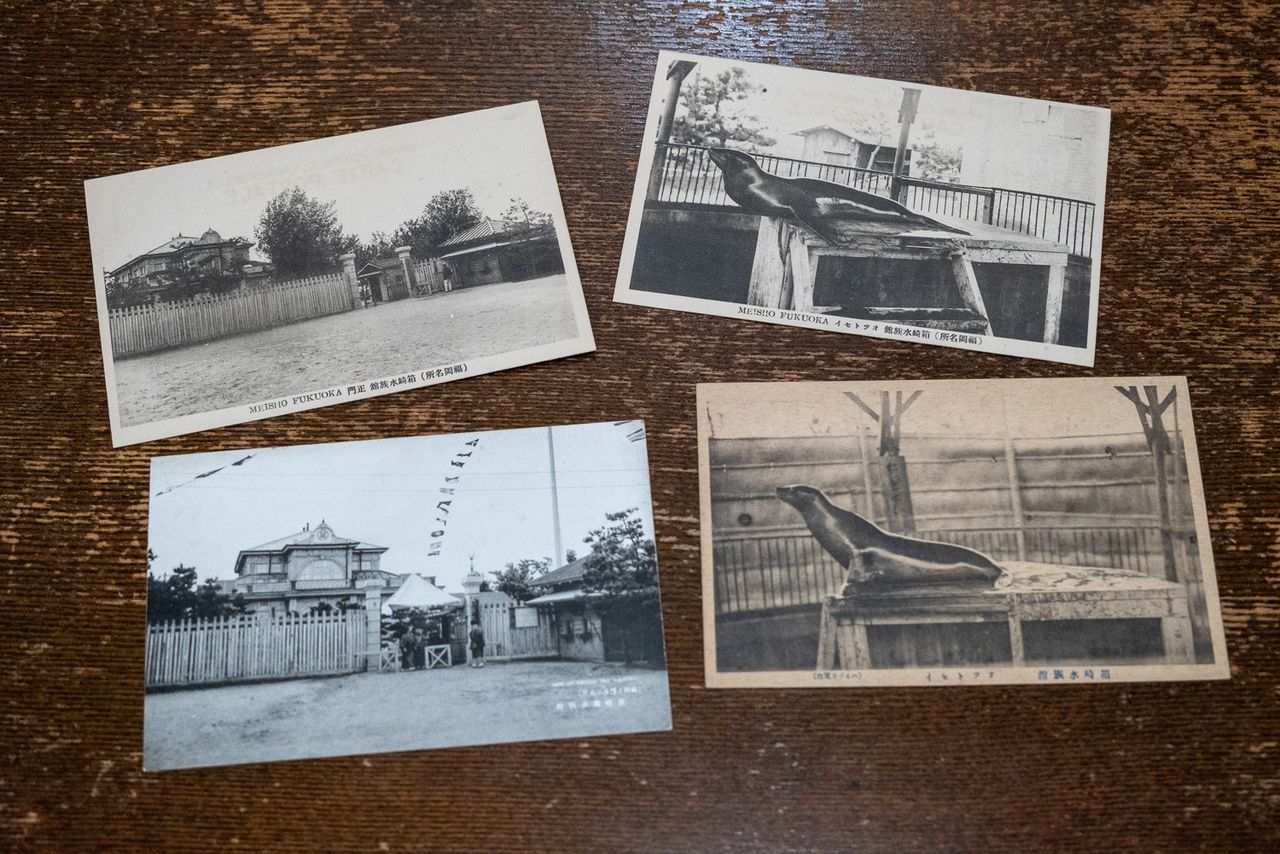
Some of the commemorative postcards from the Hakozaki Aquarium that Hanada uncovered. (© Hayashi Michiko)
A Scientific Gem
The stuffed Japanese sea lion is now kept at the Kyūshū University Museum, an education and research facility housed in the school’s old science building. The museum is undergoing renovation and is currently only partially open. However, around once a year it displays the sea lion, giving the general public a chance to view the specimen.
Maruyama Munetoshi, an associate professor involved in the museum’s research and educational programs, says that while the origins of the specimen are still unclear, there is no doubt of its taxonomy. “It’s a Japanese sea lion,” he declares.
There are currently only 10 known specimens of Japanese sea lions in Japan, making the one at the university an especially valuable resource for research into the species. Maruyama says that with support from volunteers and others, the school hopes to conduct a thorough study of the specimen, including DNA analysis and X-ray imagery.
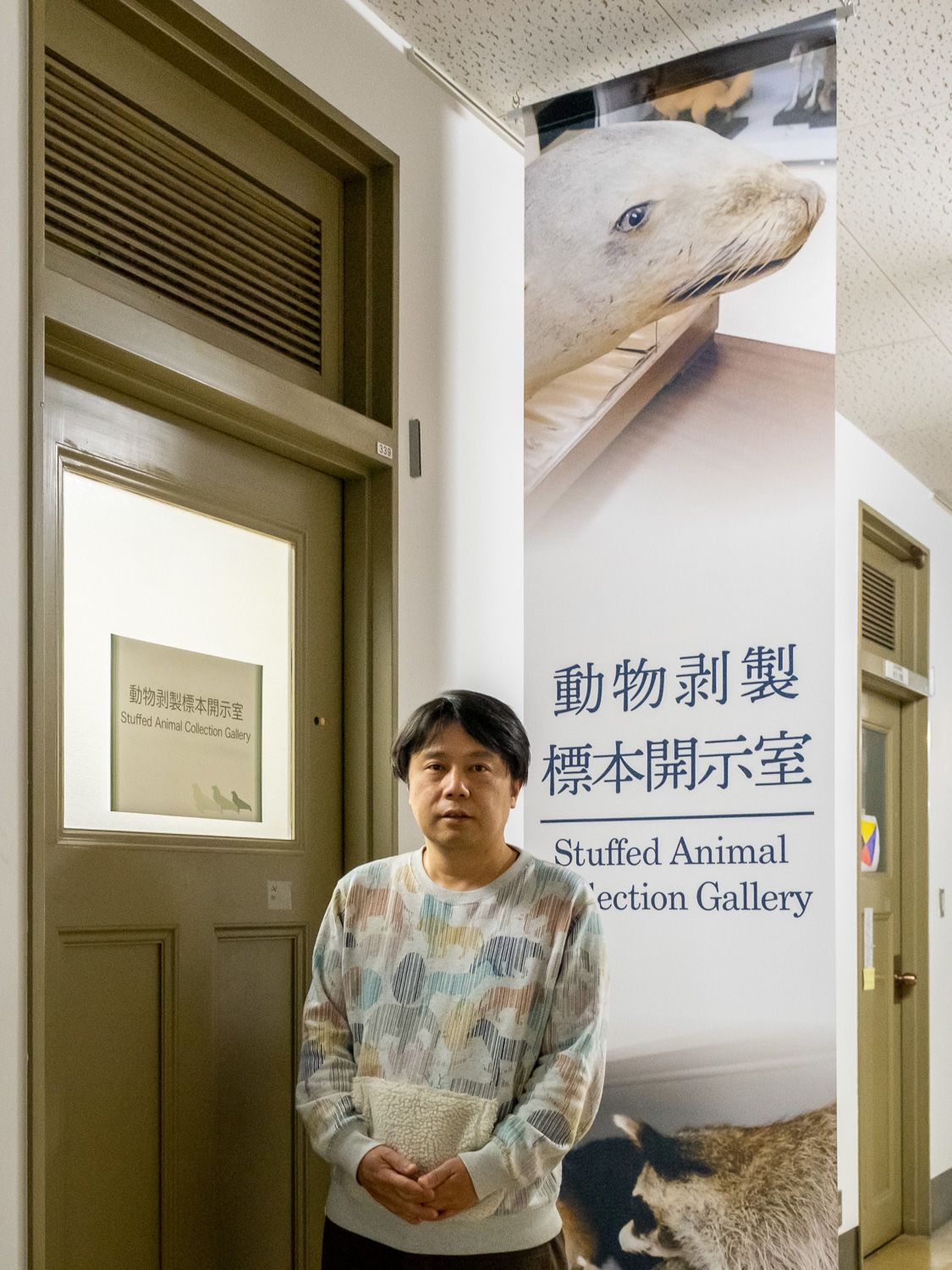
Maruyama Munetoshi outside the Kyūshū University Museum’s stuffed animal gallery. Hanging out front is a banner featuring the preserved Japanese sea lion. (© Hayashi Michiko)
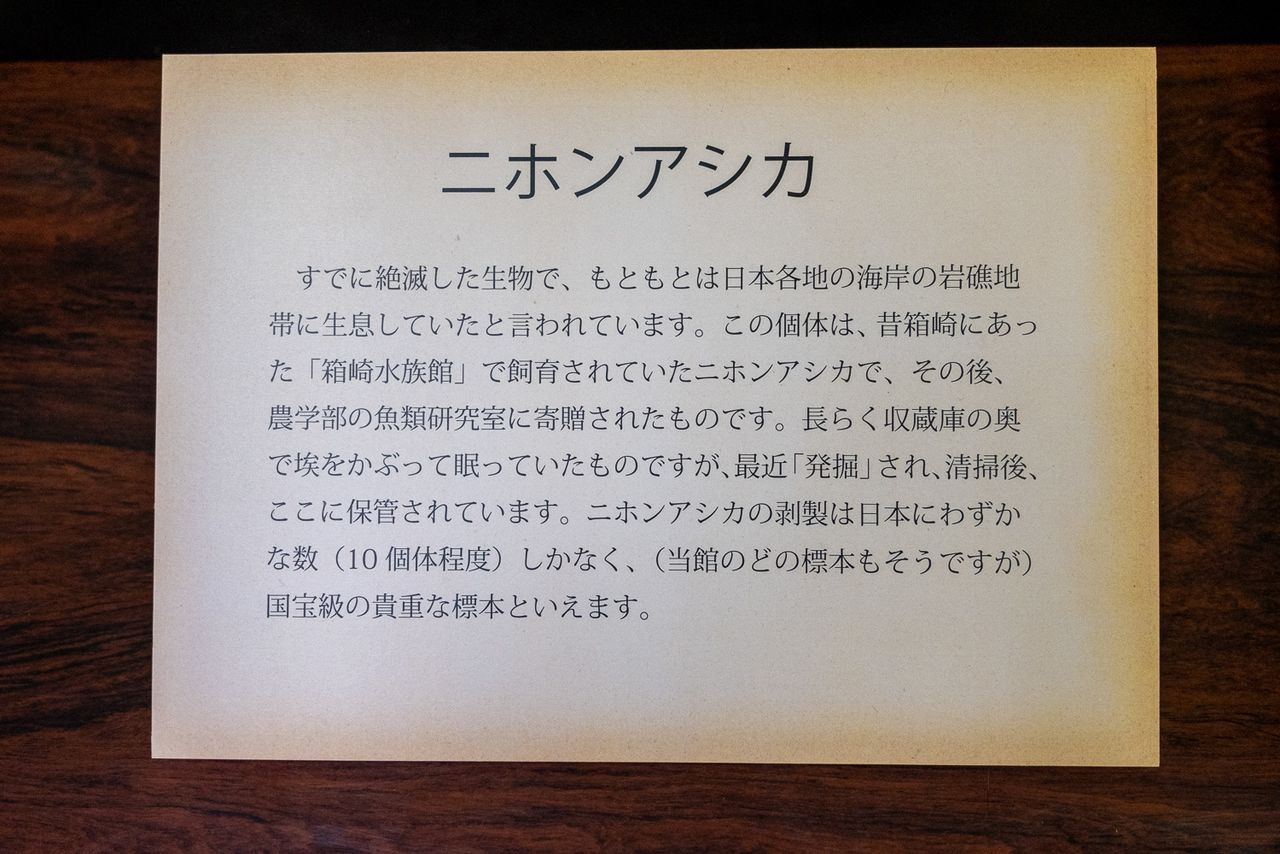
A plaque at the museum with information on the Japanese sea lion. (© Hayashi Michiko)
The story of the stuffed sea lion has become a source of pride for residents of the area. Hanada even asked a musician who performs at the Hakozaki Suizokukan Café, the pianist Kawai Takuji, to write a song based on the discovery. The commissioned piece praises the museum, which Hanada and others hope will carry on Kyūshū University’s educational legacy in the area when it reopens in several years.
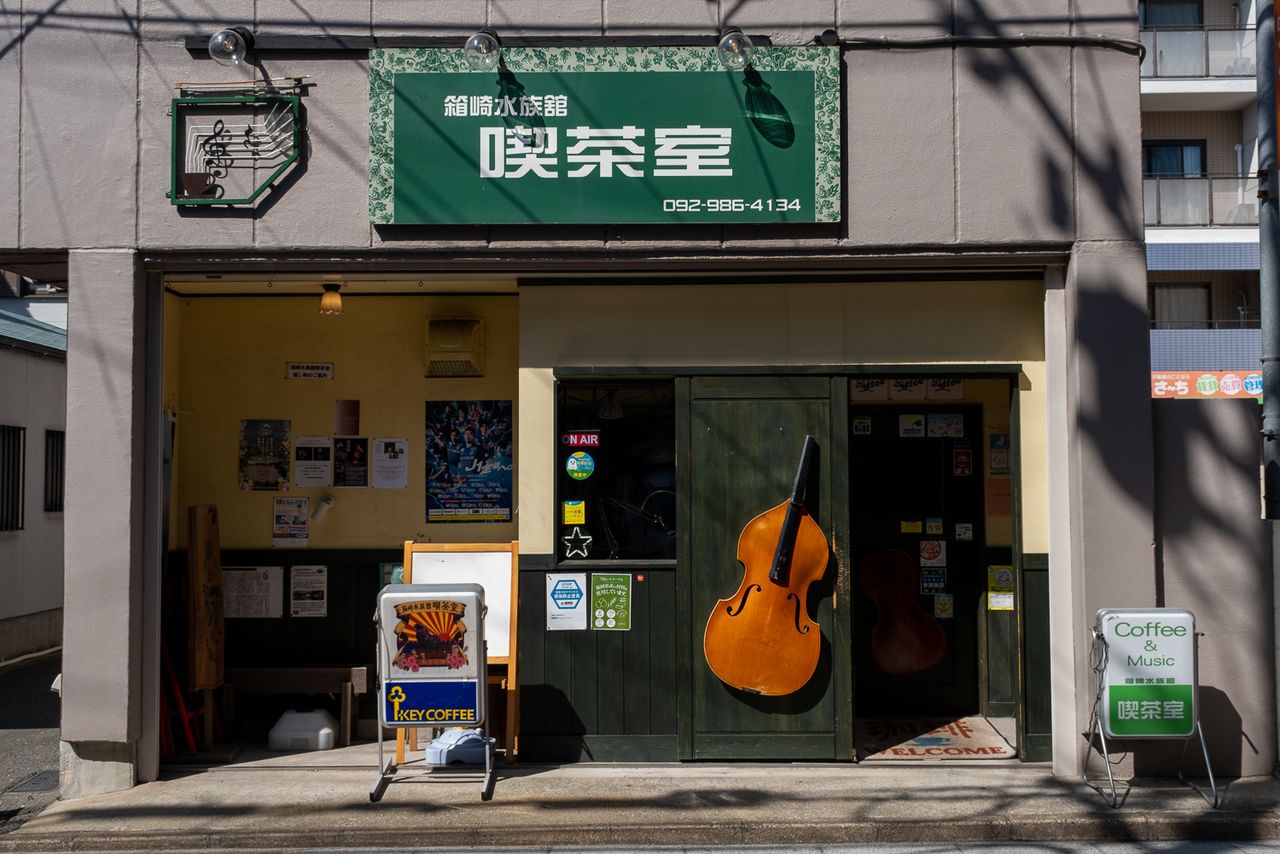
The Hakozaki Suizokukan Café. (© Hayashi Michiko)
Returning from Fukuoka, I continued searching for information on the Hakozaki Aquarium. It turns out that the facility in fact kept a number of Japanese sea lions in the 25 years it was in operation. The Fukuoka Nichinichi Shimbun reported on March 31, 1910, just a week after the aquarium opened, that one of the sea lions, the wild specimen from Karafuto, gave birth. I also came across a 1953 work by Kuroda Nagamichi, one of the founders of the academic organization the Mammal Society of Japan, that tells of a sea lion from Takeshima being kept at the aquarium. It may take DNA analysis to determine which of the four is the one at the university museum.
Since starting my research, I have had the opportunity to photograph several stuffed Japanese sea lion specimens. Of these, the one at Kyūshū University is the most endearing. To my chagrin, though, I found it difficult to capture its gentle features with my lens.
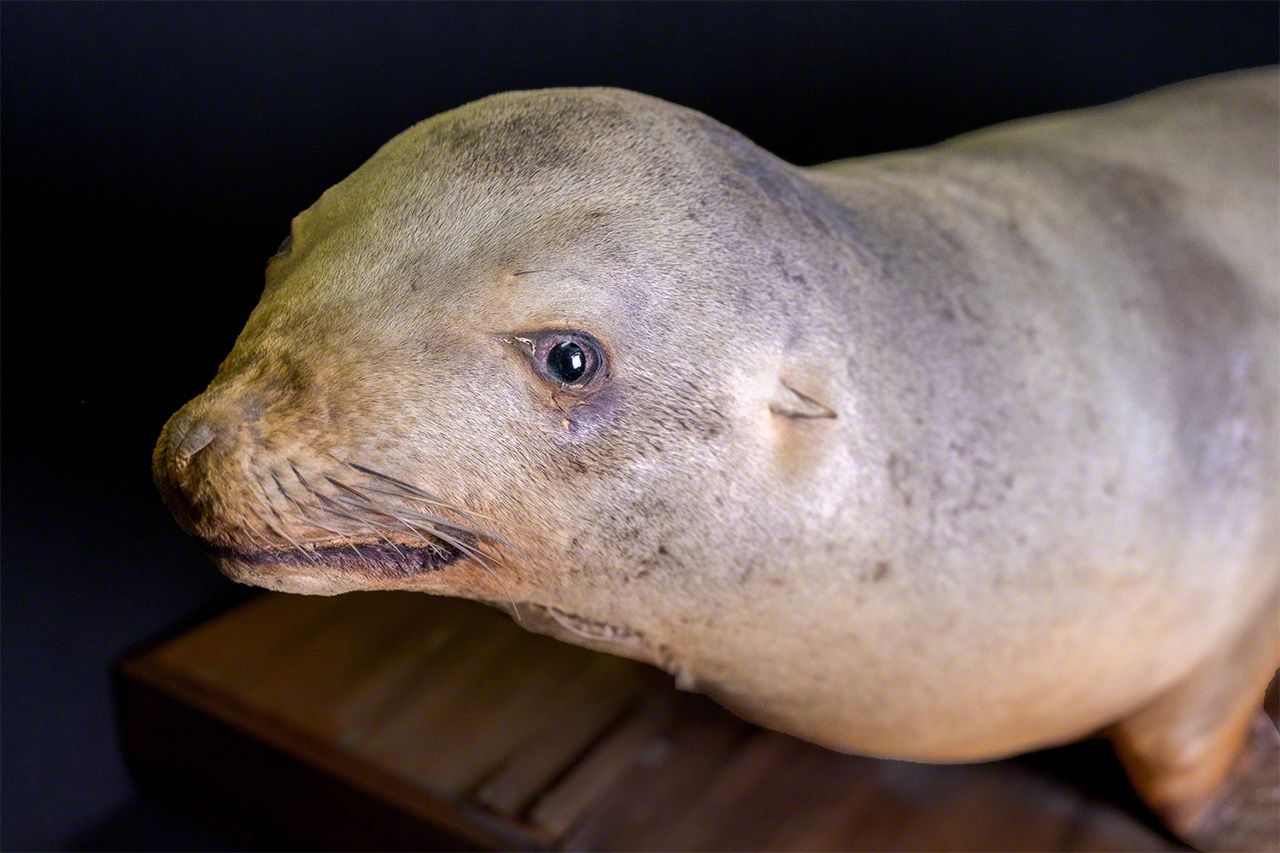
The Japanese sea lion has a kind face, but when photographing the specimen, the scars left by the taxidermist come to the forefront, giving the creature with what appears to be a sad, pained expression. (© Hayashi Michiko)
Lost Forever
The sad fate of the Japanese sea lion is made all the sadder by the fact that the species disappeared before science could fully study it. The discovery of the Kyūshū University specimen provides a whisper of a silver lining to an otherwise tragic tale by offering a chance to learn more about the extinct animals. I hope Hanada’s sea lion will further academic knowledge of the species and promote broader support among the public for preserving the world’s shrinking biodiversity.
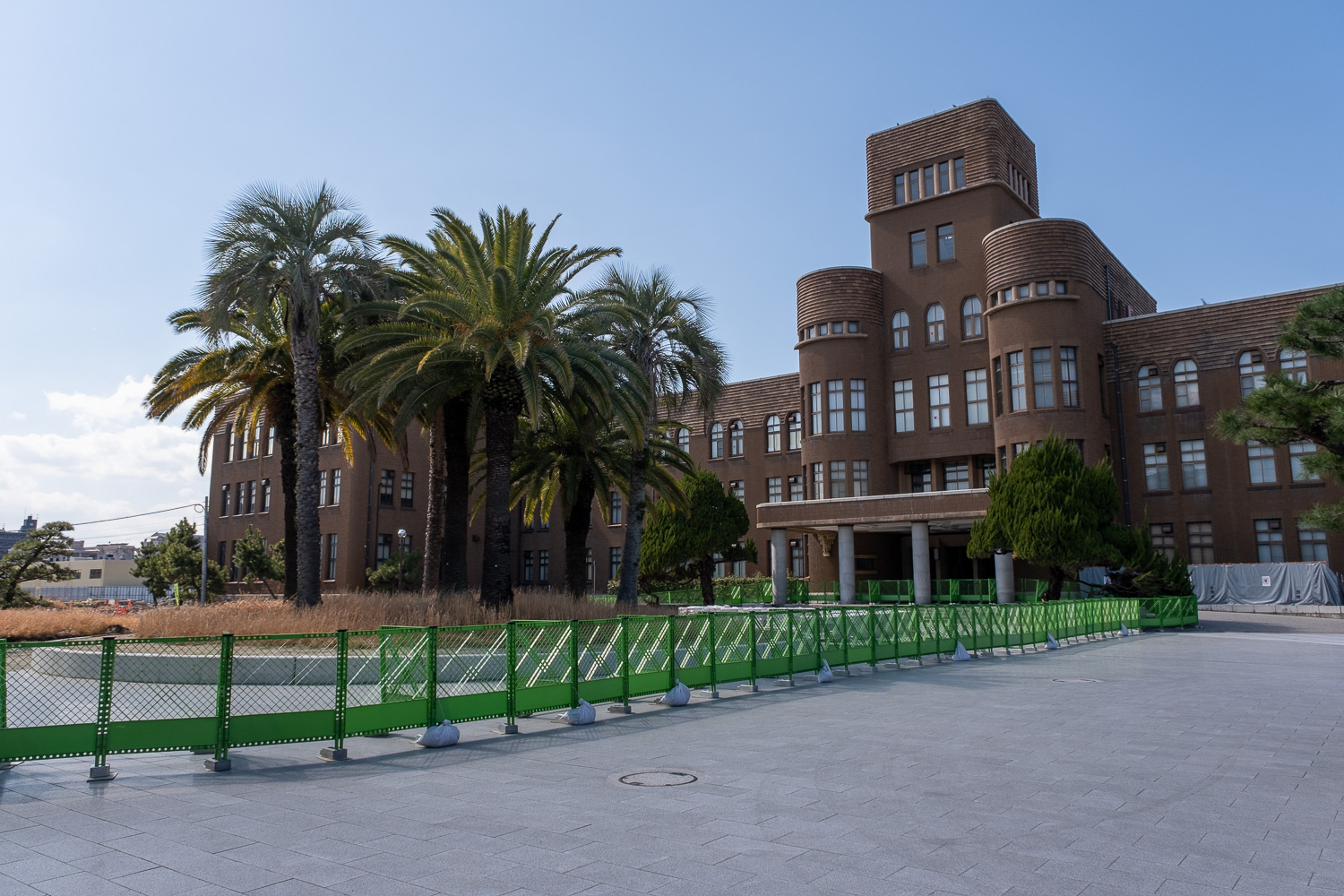
The historic science building that now houses the Kyūshū University Museum was registered as a tangible cultural property in spring 2023. (© Hayashi Michiko)
(Originally published in Japanese. Banner photo: The stuffed specimen of a Japanese sea lion discovered at Kyūshū University. © Hayashi Michiko.)